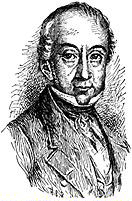Last week we explained that there are 39 categories of melakhotor creative activities, which we are not allowed to perform on Shabbat. One of them is called: hab'ara, which mean to light a fire. We also explained that lighting fire was singled out in the Tora, unlike the other 38 melakhot, and we offered one explanation for this (see here)
Before we analyze the similarities and differences between fire and electricity, and in order to better understand them, I must explain first how the exceptional nature of fire vis-a-vis the rest of the melkahot was viewed and interpreted.
In the time of the haskala (European illuminism, 19th century) many reformers argued that the reason the Tora did not authorize to light a fire was because in Mosaic times lighting a fire constituted an exhausting work: fire was started with stones, and it was a lengthy and exhausting process. That is why it was forbidden. And this is why, the first reformers reasoned, it should be permitted today, when we can obtain fire with a simple match.
Jewish tradition, however, never identified melakhot with prohibitions associated necessarily with physical effort. On the contrary: if you live in the 12th floor of an apartment building, you should walk up the stairs. It is the creative nature of the act what might define it as a melakha, not the physical effort that it demands.
This idea, applied to our case, could be illustrated by rabbi Sa'adia Gaon's (882-942) explanation of the pasuq "Do not light a fire in your houses on the day of Shabbat" (Shemot 35:3). He translated this pasuq: "Do not even light a fire on Shabbat... "even" because, hab'ara--which in Biblical Hebrew means "lighting a fire from a previous fire" not from stones--is the easiest conceivable melakha, i.e., the epitome of an effortless and a minimal creative activity. The Tora singled out hab'ara to convey that even an effortless but minimally creative act is still forbidden on Shabbat.
(to be continued...)
SHABBAT SHALOM
Candle lighting in NYC: 7:44
Shabbat ends in NYC: 8:53
Click HERE to WATCH and ENJOY
Israel in timelapse
A unique tour of Israeli landscapes.
